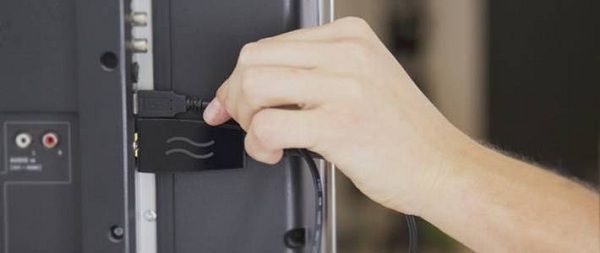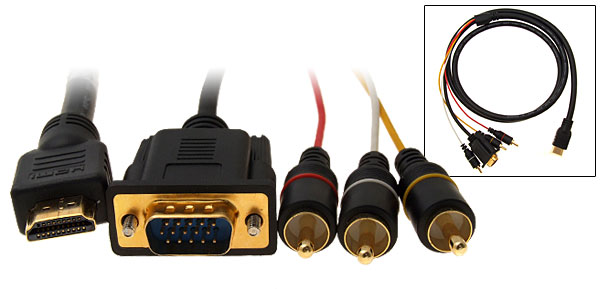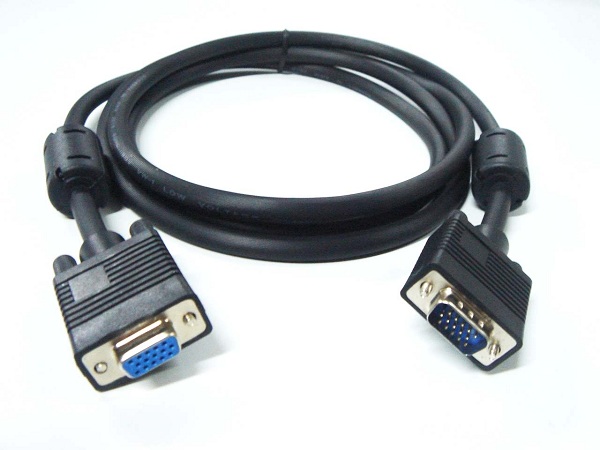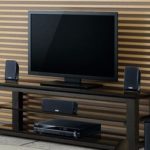Connecting a home theater to a laptop
Modern portable personal computers act not only as devices for viewing websites, games, office work. Connecting to them home theater, you can turn your laptop into a media center: watch movies, stream YouTube videos on the big screen, play online games, play audio and video files. With improper switching, even expensive equipment can fail, and it will need repairs. To avoid this, you need to know how to connect the device to a home cinema.

Content
Types of connectors
Before connecting, you need to decide which ports are in two devices. This is done in order to select the desired wire to connect the speaker system and laptop PC.
- HDMI - A connector that looks like a USB port, but is longer and thinner.Transmits video signal data with sound in one cable. Provides a digital signal, while the settings take a minimum of effort.
- VGA resembles a rounded rectangle. The connector consists of 15 pins (5 pins in 3 rows), provides the transmission of an analog video signal. To transmit audio, an additional cable is needed that connects the headphone jack to in columns or cinema complex.
- RCA. Sometimes you can find in laptops a composite video connector (usually yellow). To transmit the audio signal, use the headphone jack through the "Mini-Jack" - "RCA".

Connect using an HDMI connection
After selecting the desired wire to connect devices, connect them with a cable, making simple settings.
Connection procedures:
- Turn off the device.
- Connect one end of the wire to the HDMI input connector on the personal cinema receiver and the other end to the HDMI output port on your laptop.
- Turn on the technique.
- In the settings of the acoustic complex, select the desired jack and set it as a signal source.
- To configure the PC, right-click on the screen, in the drop-down list select the option "Screen resolution".Set one of the commands: expand the image to both displays, turn on one of the screens, duplicate the video image.
If the monitor on a high-definition home theater (HDTV), then the video can only be seen on the TV screen, and not on the laptop display. To see the items on the monitor of a laptop - turn off the personal cinema.
If this nest is not available, use adapter, with which you can connect the HDMI speaker connector to the USB port of a laptop. However, this will lead to a loss of image quality.
Connecting devices via HDMI is the most preferred option, as it provides the most optimal quality of audio signals and images.
Connection via VGA connector
To connect a home acoustic system to a laptop, you need a wire with a standard RCA (tulip) and Mini-jack 3.5 mm jack. To make the image from the monitor appear on the big screen, insert the cable with “tulips” into the “aux in” connector on the TV, and the “mini-jack” into the corresponding socket on the laptop.
The disadvantages of this connection include poor-quality video transmission.
Important! VGA-connector transmits analogue signal and video with a resolution of no more than 1600x1200 pixels.

Wireless connection system
The development of audio equipment production has given rise to wireless moduleswhich make it much easier to connect audio and video systems. To organize the work of a multicomponent complex, choose from two options: determine the point of signal transmission (for example, a router) or use as a receiver integrated bluetooth module.
Supplement to wired channels is wireless WLAN module. Using a LAN or WLAN adapter, the network output of the Wi-Fi equipment with a transmitter is connected to the router. This configuration provides the highest quality sound and image.
Intel-based laptops have a built-in wireless method. WiDi module (Wireless Display). It plays 1080p video. To do this, you need a WiDi adapter (in some models it is built-in), which is connected via the HDMI jack on your home theater.
To ensure wireless connectivity using a USB port, you need a special Q-Waves Wireless USB AV device. The receiver is installed on the HDMI or VGA port of the TV, and the transmitter is connected to the USB port of a laptop.
Manufacturers of speaker systems constantly update the model range and increase the level of technical characteristics of multicomponent complexes. Users also increase requirements for communication tools: they must not only provide high-quality sound and image, but also interact with each other. Video and audio output from a laptop to a large home theater screen is possible using both wires and a wireless connection.

/rating_on.png)












